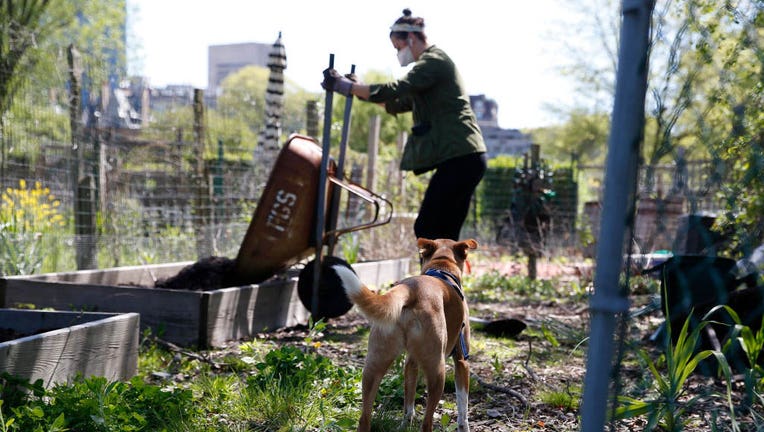Over 2 in 5 US households now growing food following pandemic boom

FILE IMAGE - A woman puts compost into the garden beds as she tends to her plot in the Fenway Victory Gardens in Boston on May 20, 2020. (Photo by Jessica Rinaldi/The Boston Globe via Getty Images)
Whether it was more time to start a new hobby during the pandemic, or some just looking for a healthier, cheaper way to get vegetables and herbs for the family, more and more Americans are now growing their own food.
"Food gardening," which is defined as household participation in vegetable, fruit trees, berries or herbs gardening, has seen "a significant uptick" since the COVID-19 crisis began, according to researchers at the National Gardening Association.
The association’s research division shares an annual survey to assess gardening activity and purchasing trends in the U.S. The 2022 survey, which is set to be released in the coming days, found that over two in five U.S. households (41%) participated in food gardening in 2021 — or roughly 53.7 million households.
Starting in 2018, the number of U.S. homes that reported food gardening stood at just 35.4%. It dropped to 33.1% in 2019 before skyrocketing in 2020 to 41.7% — the first year of the pandemic when many were forced to stay at home and picked up new hobbies.
In 2021, the second year of the pandemic, the number of U.S. households growing food decreased slightly to 41.3%, yet remained higher than what was reported in many previous years.
Overall, U.S. households spent an average of $88.24 on food gardening in 2021, the annual survey found.
Tomatoes, cucumbers, sweet peppers, beans, carrots, summer squash, onions, hot peppers, lettuce and peas were among the top homegrown vegetables in the U.S., according to a five-year analysis of food gardening by the association, released in 2014.
Pandemic prompts boom in US gardening
Last year’s survey highlighted the boom in U.S. gardening, sharing that 18.3 million people picked up some tools and started gardening in 2020. Experienced gardeners also got outside more with two-thirds trying a new gardening activity, it found.
Some 42% of gardeners in 2020 said they increased their activity due to the pandemic, and 88% of gardeners said they intended to increase or maintain their level of gardening activity in 2021 (36% more, 52% the same).
Researchers said the survey found that the intent to garden more was more pronounced among younger ages, gardeners with children, those living in apartments or condos, as well as Black and other gardeners of color.
Why people gardened more: mental benefits, food, exercise
Last year’s survey found that younger gardeners were overall more driven by growing food, as well as the benefits of doing a family activity together.
Meanwhile, older gardeners were more driven to garden in 2020 in an effort to beautify their homes and for exercise.
All age groups in last year’s survey cited the mental health and emotional benefits of gardening.
This story was reported from Cincinnati


